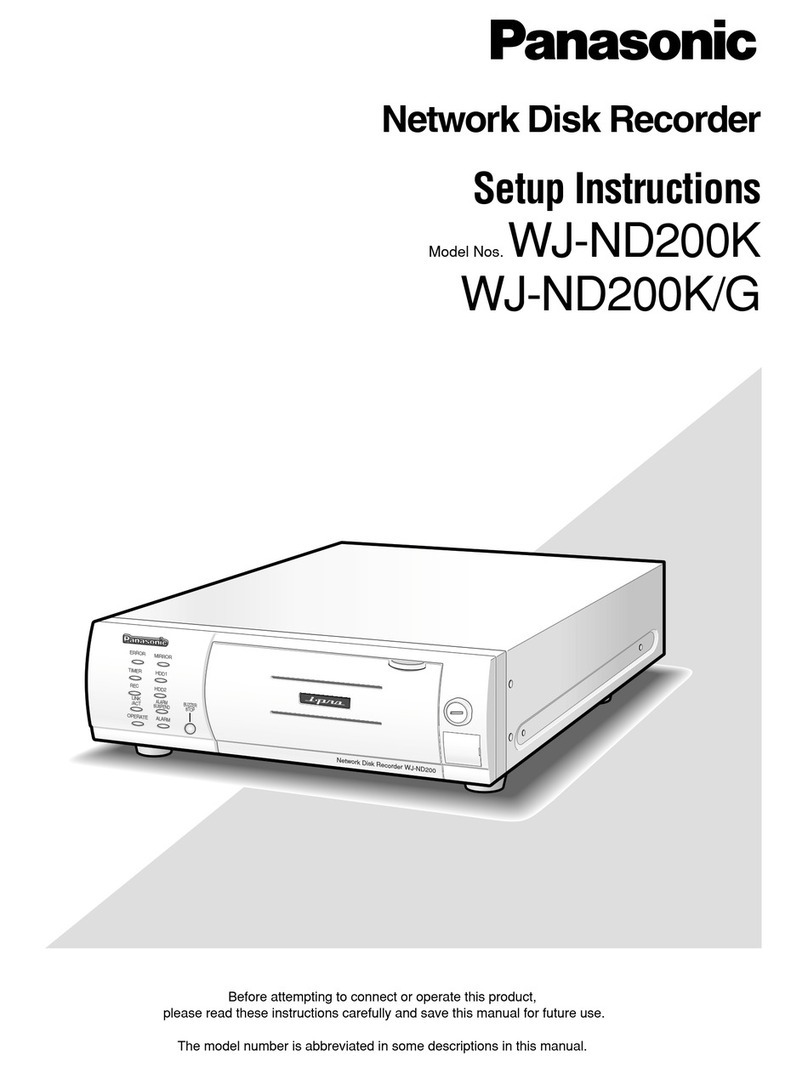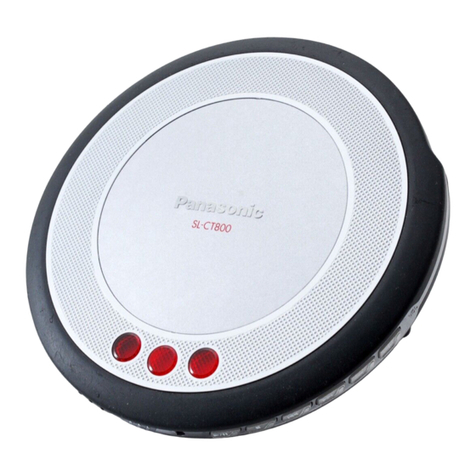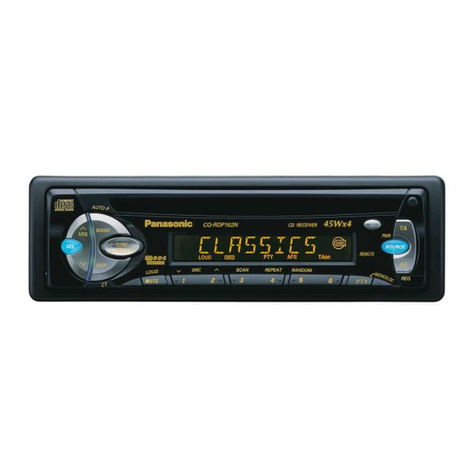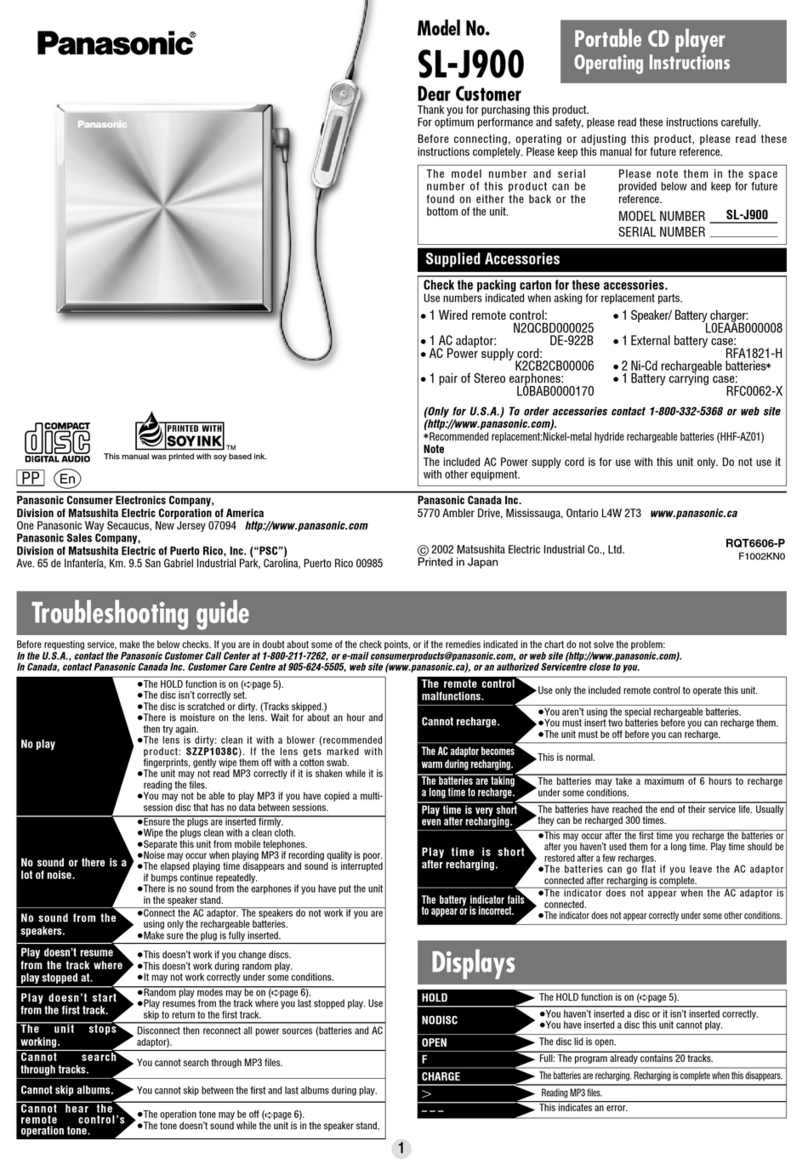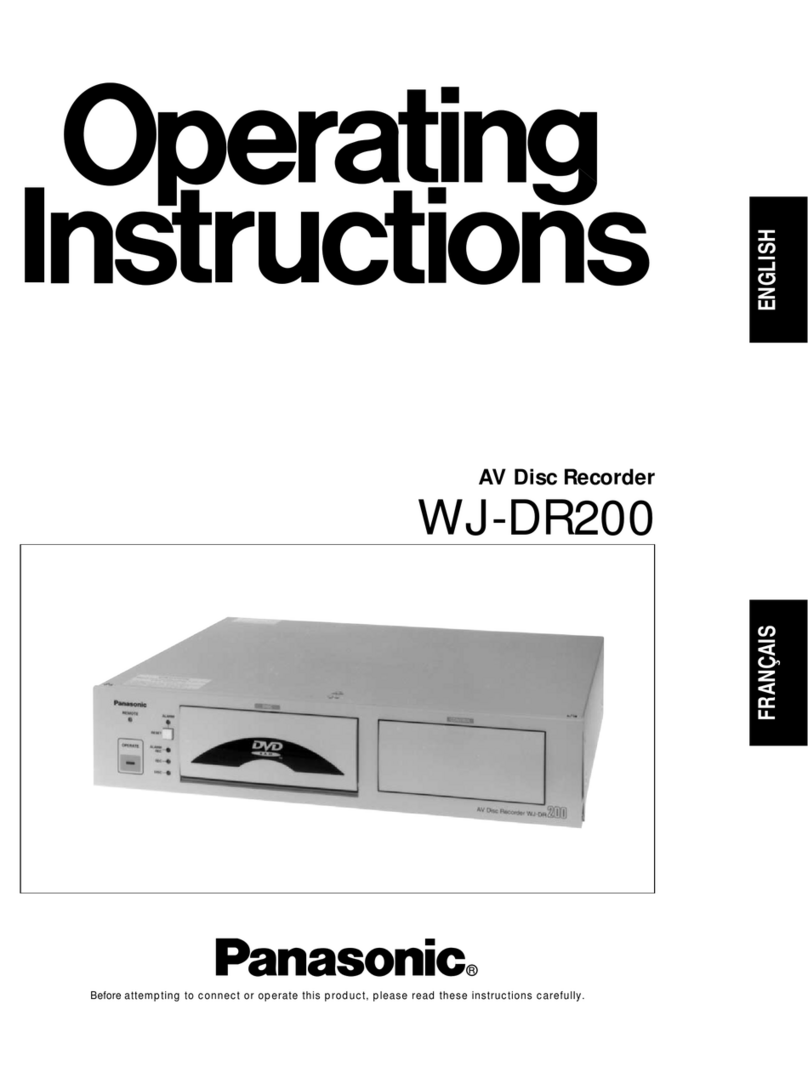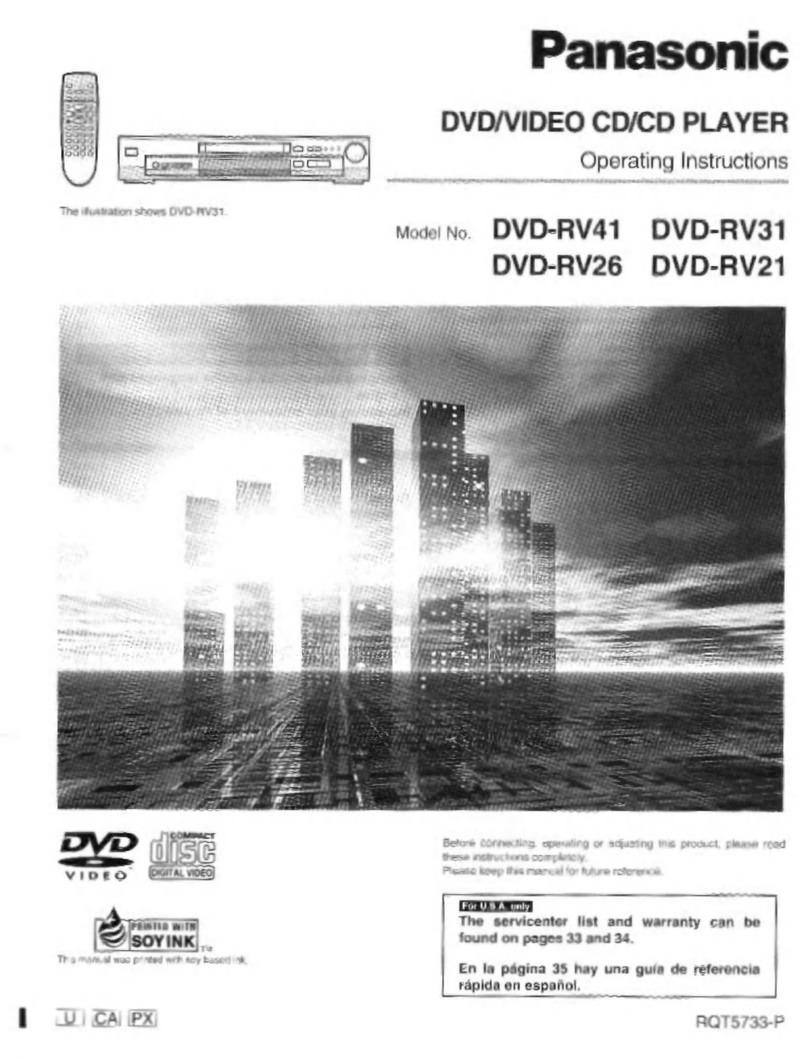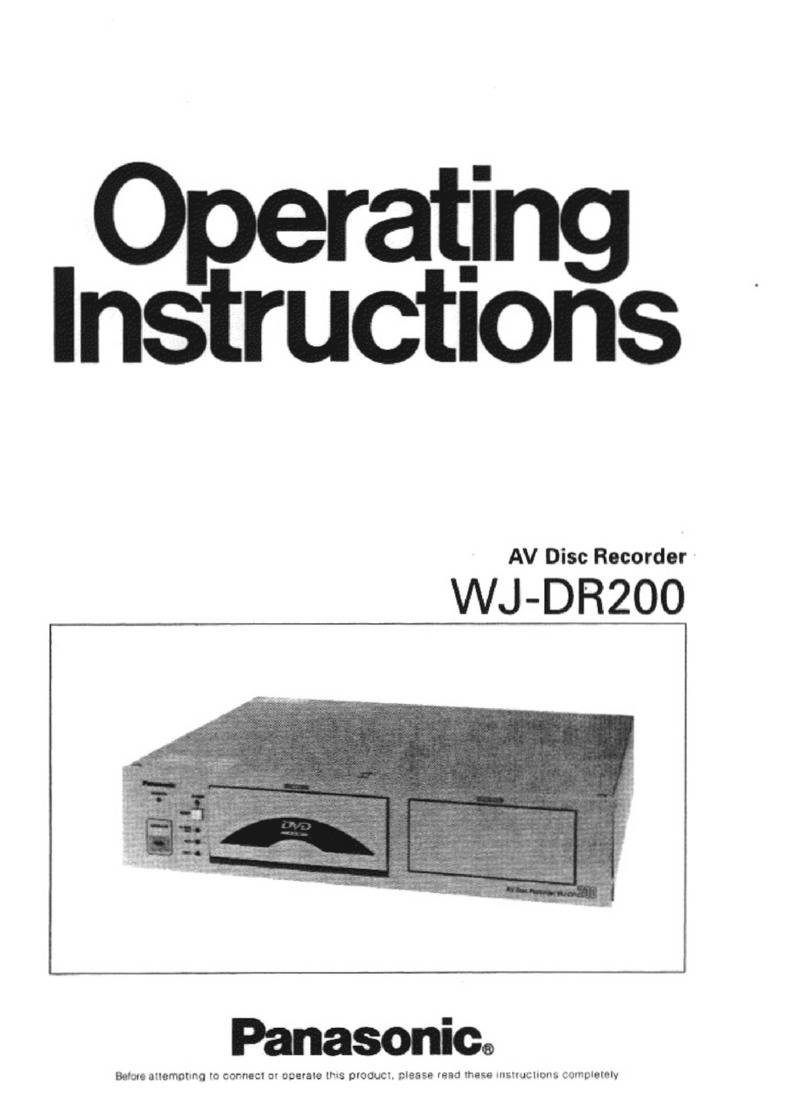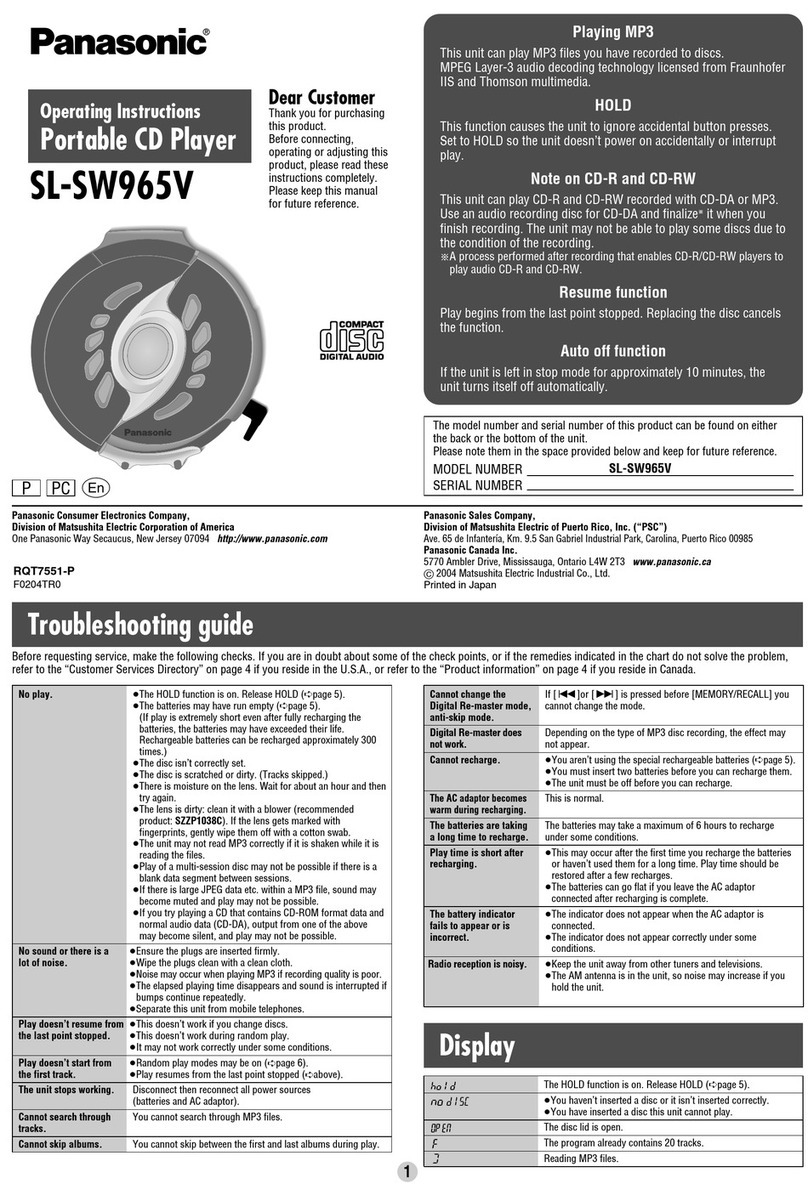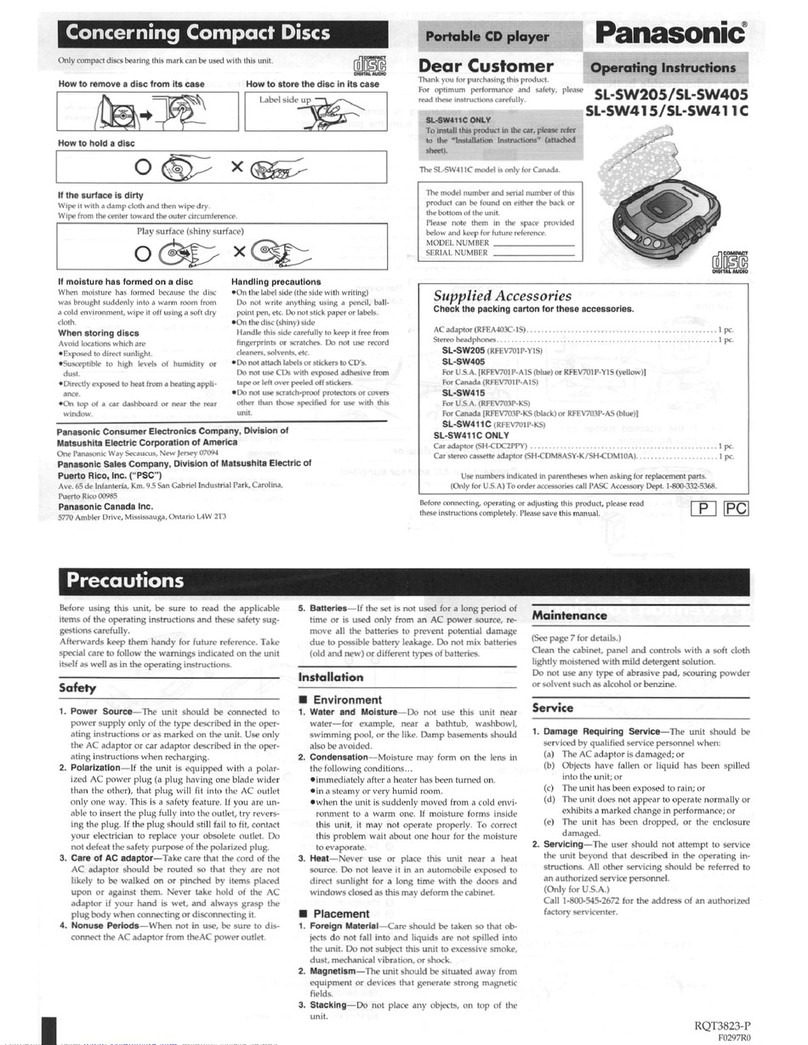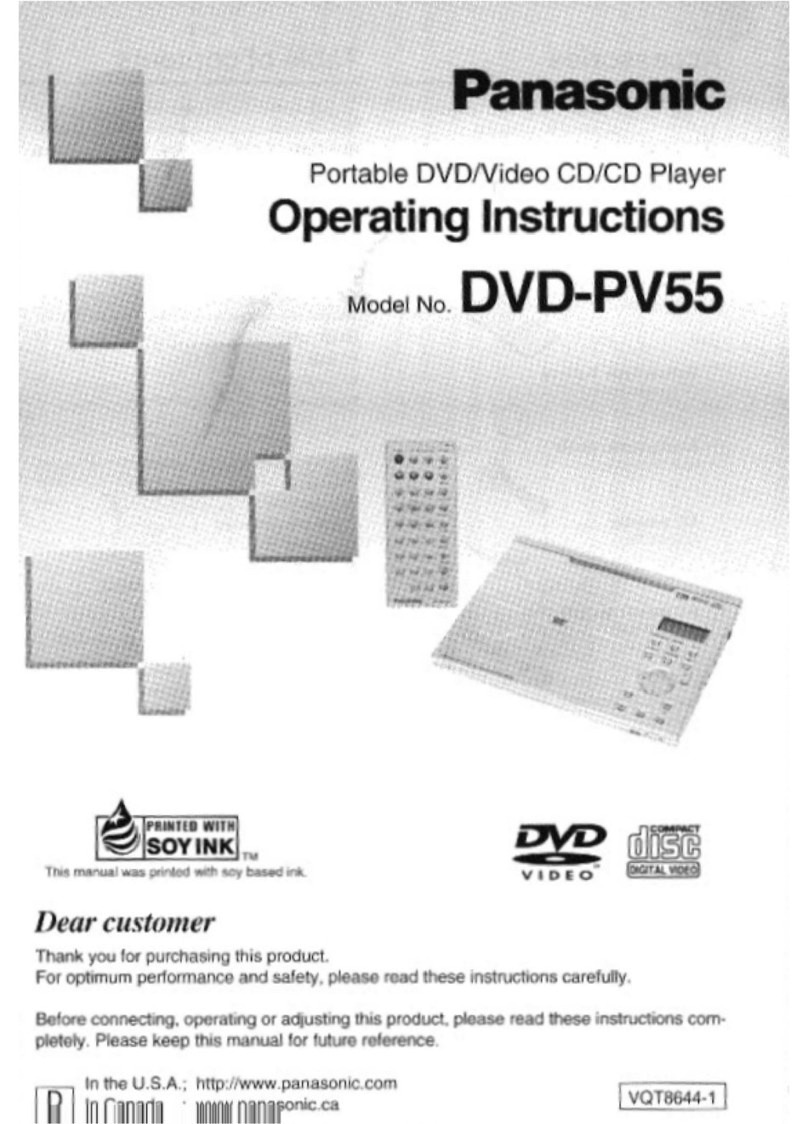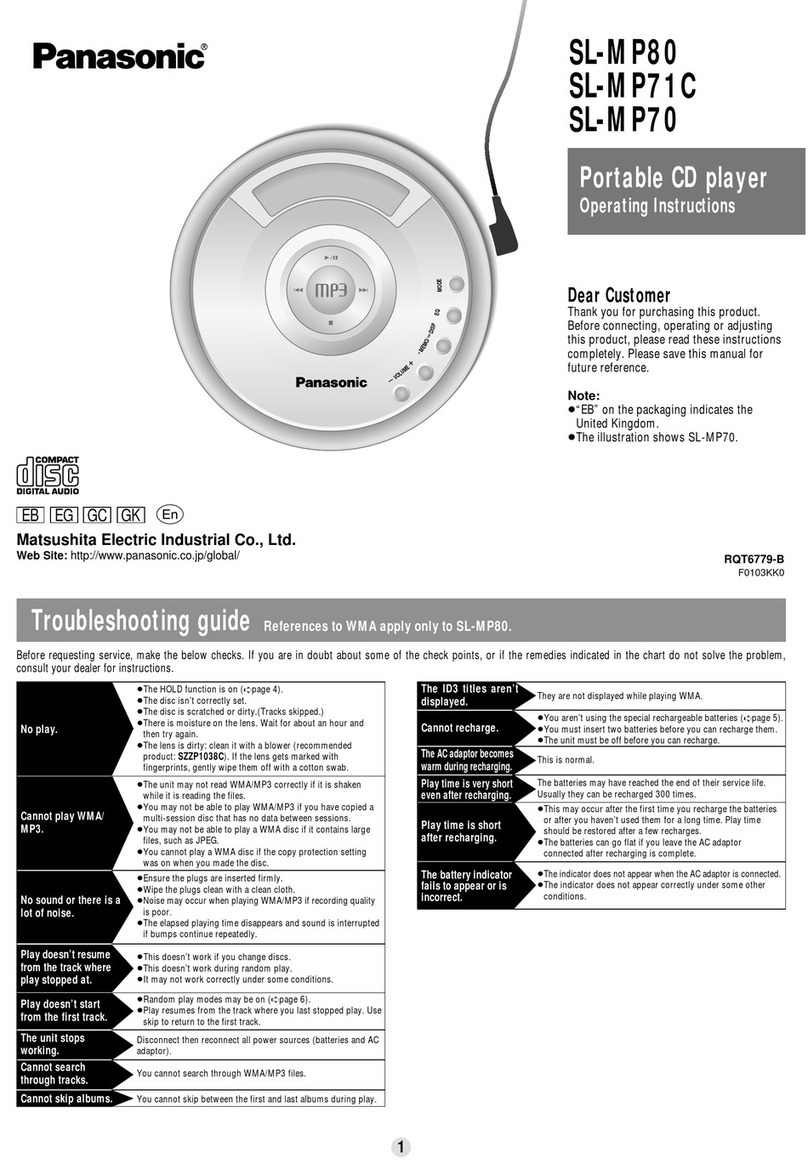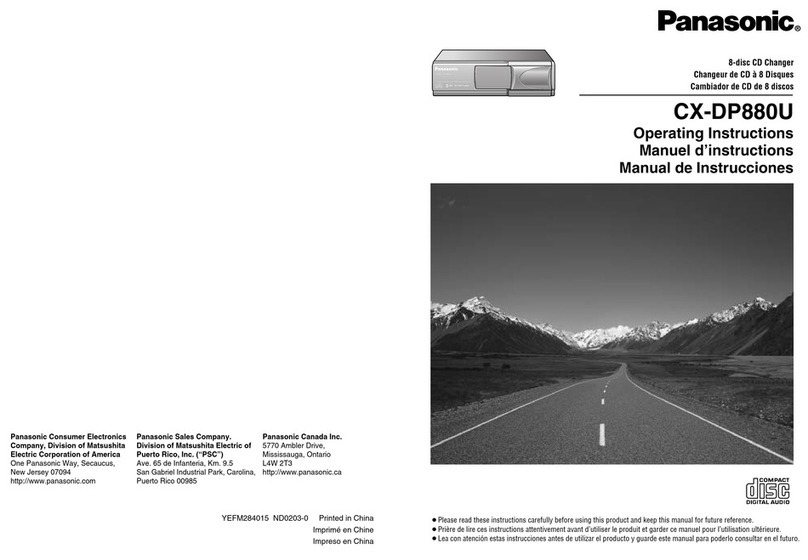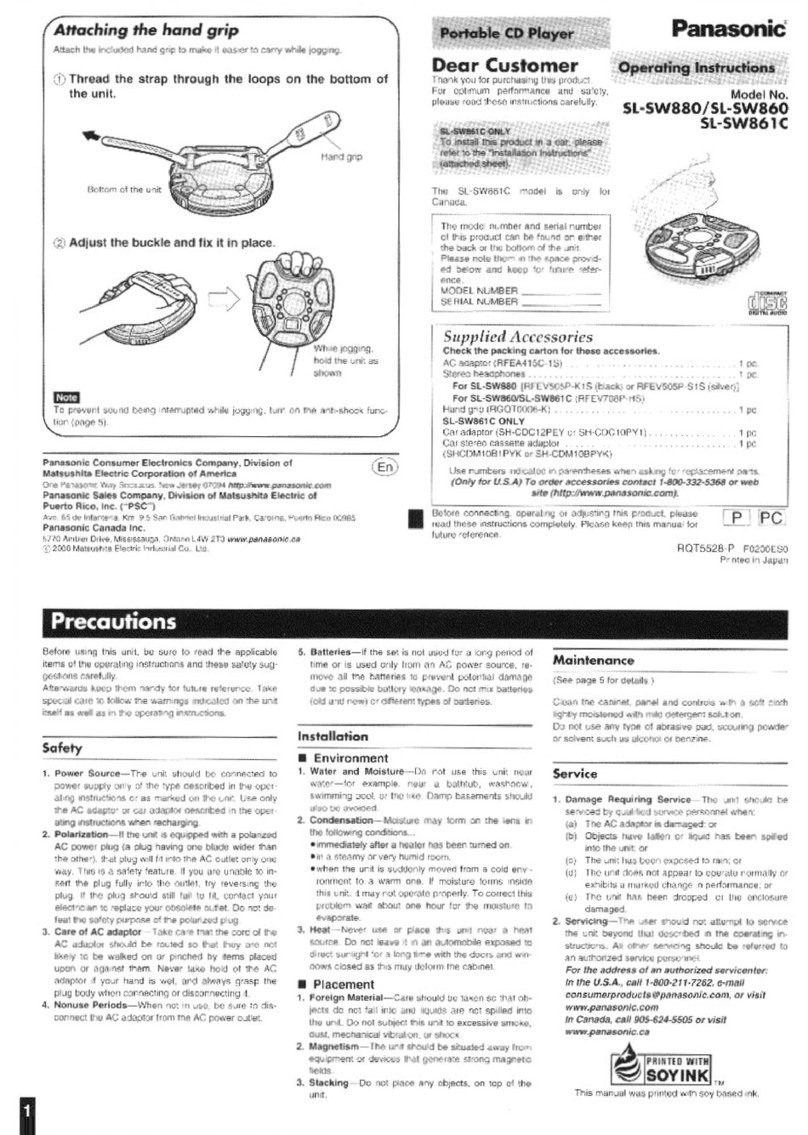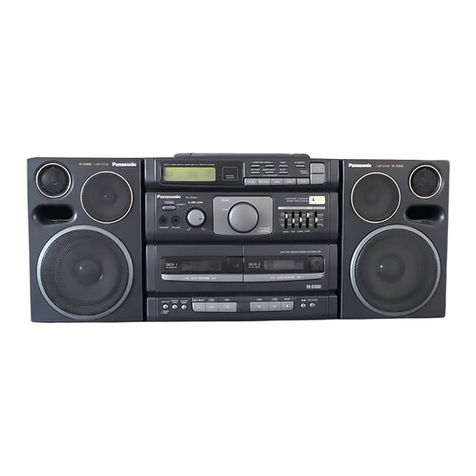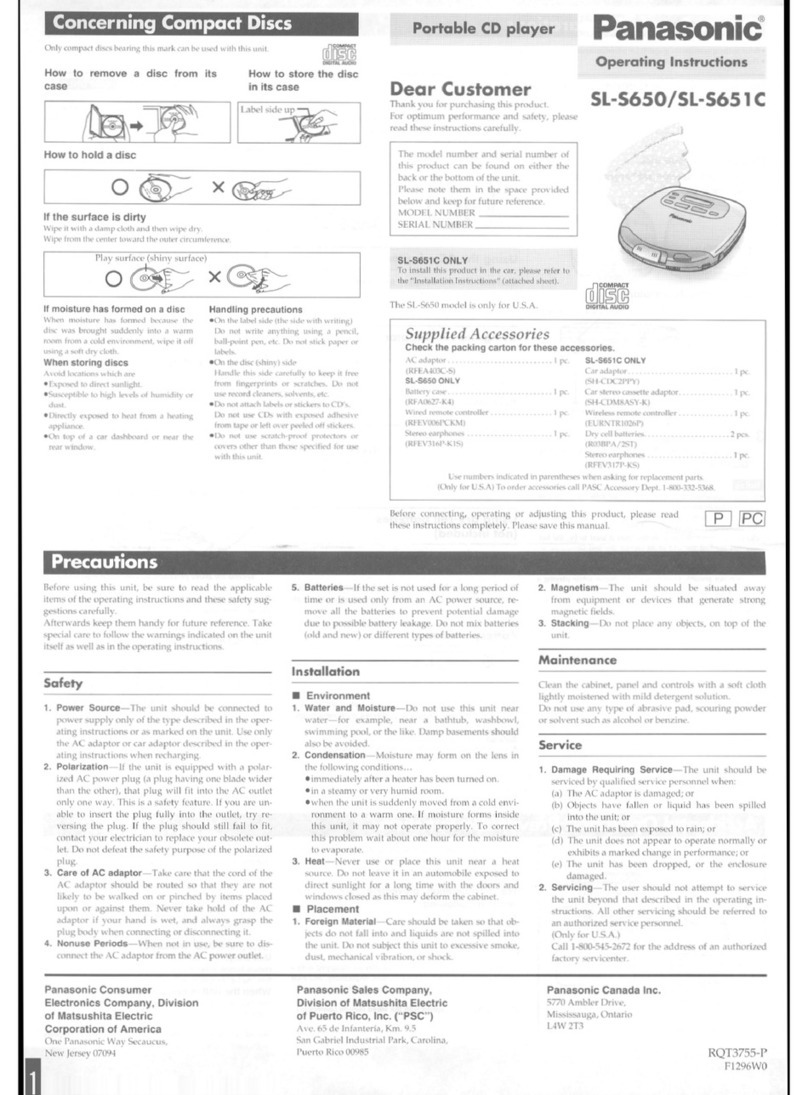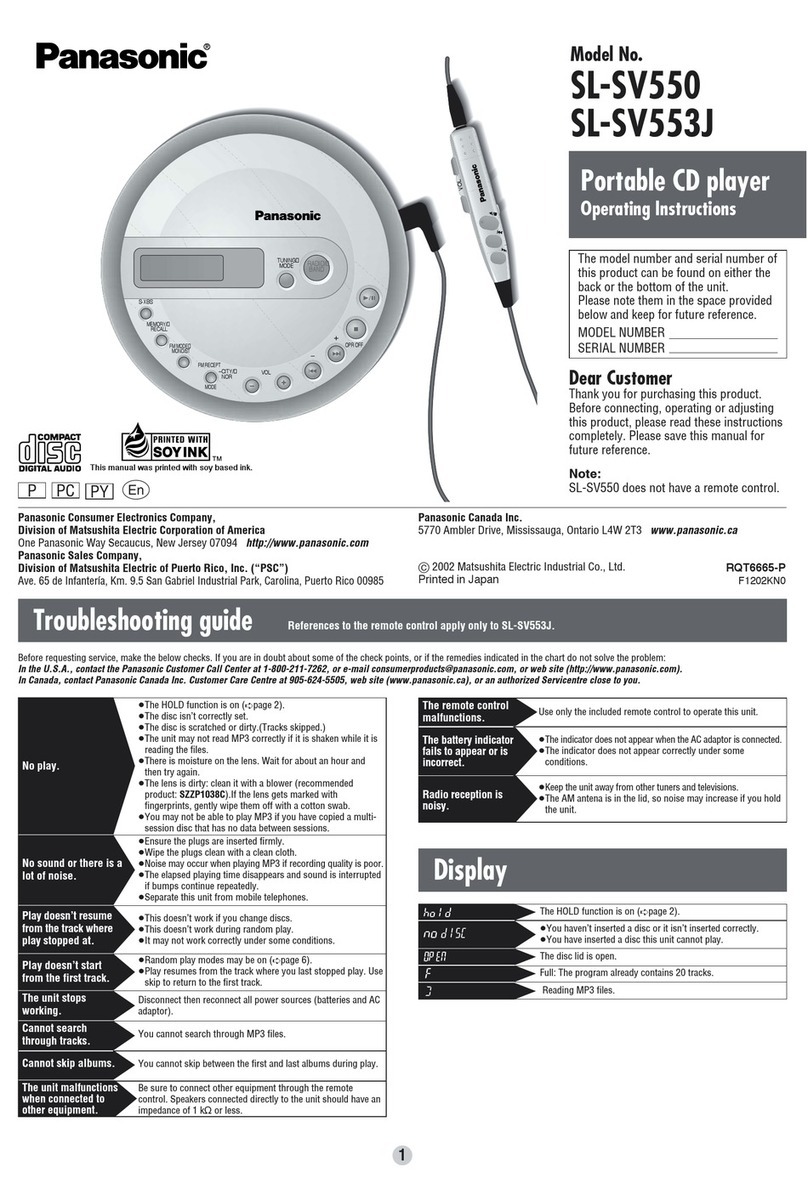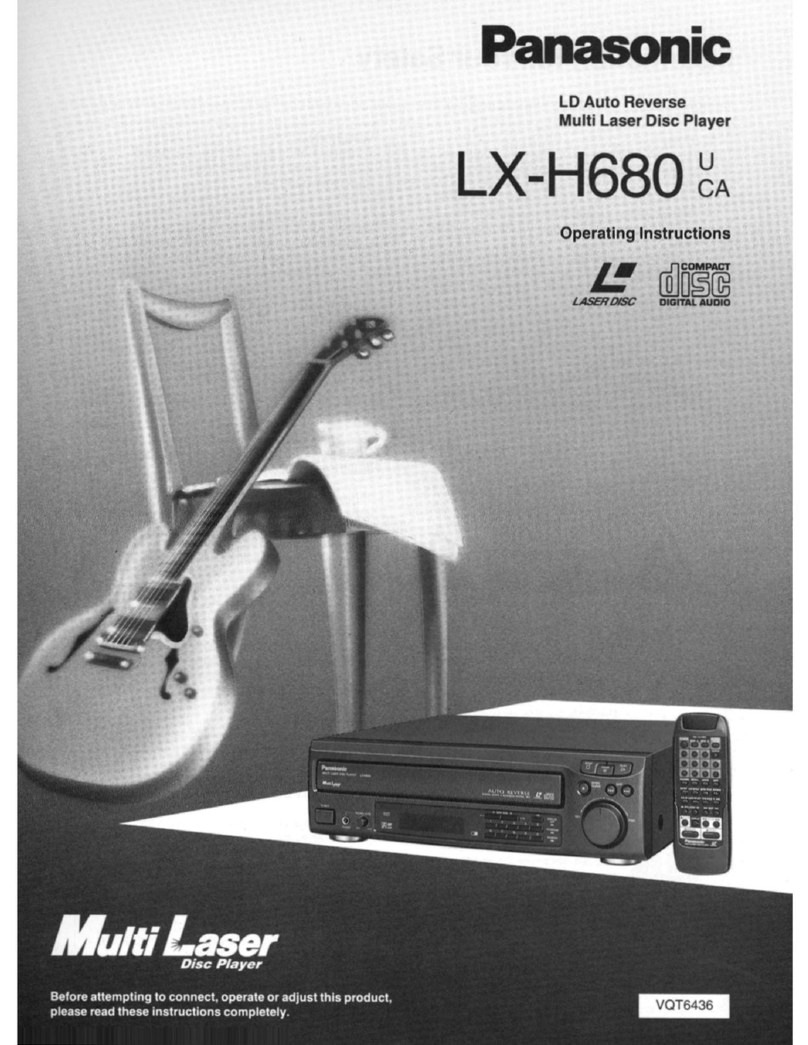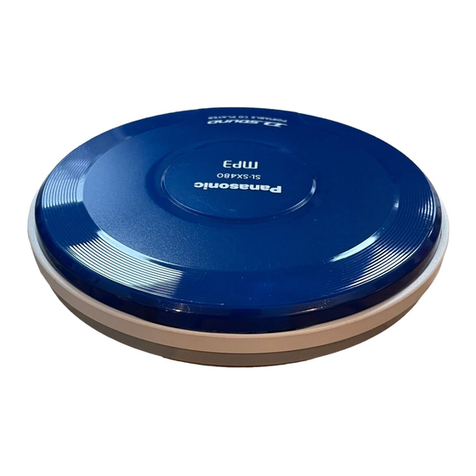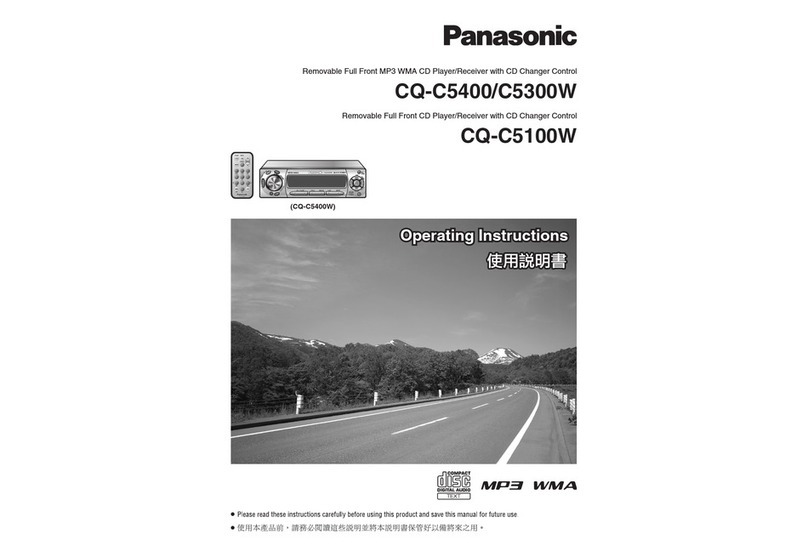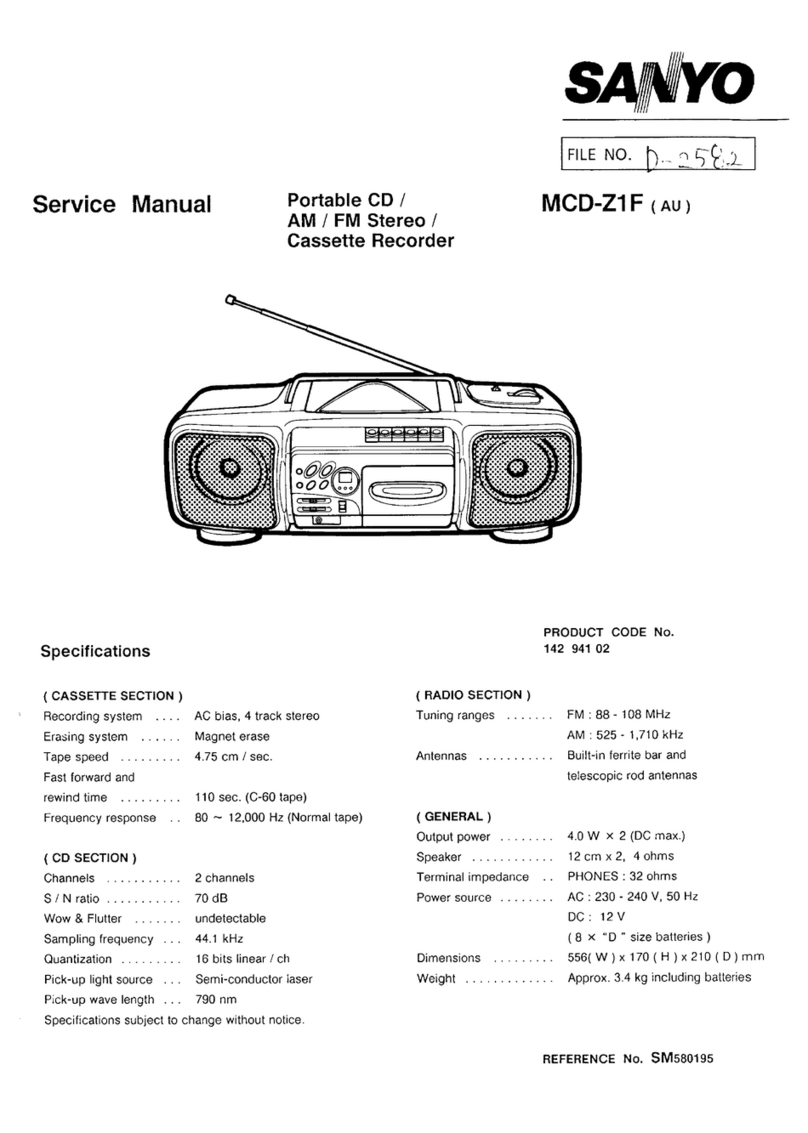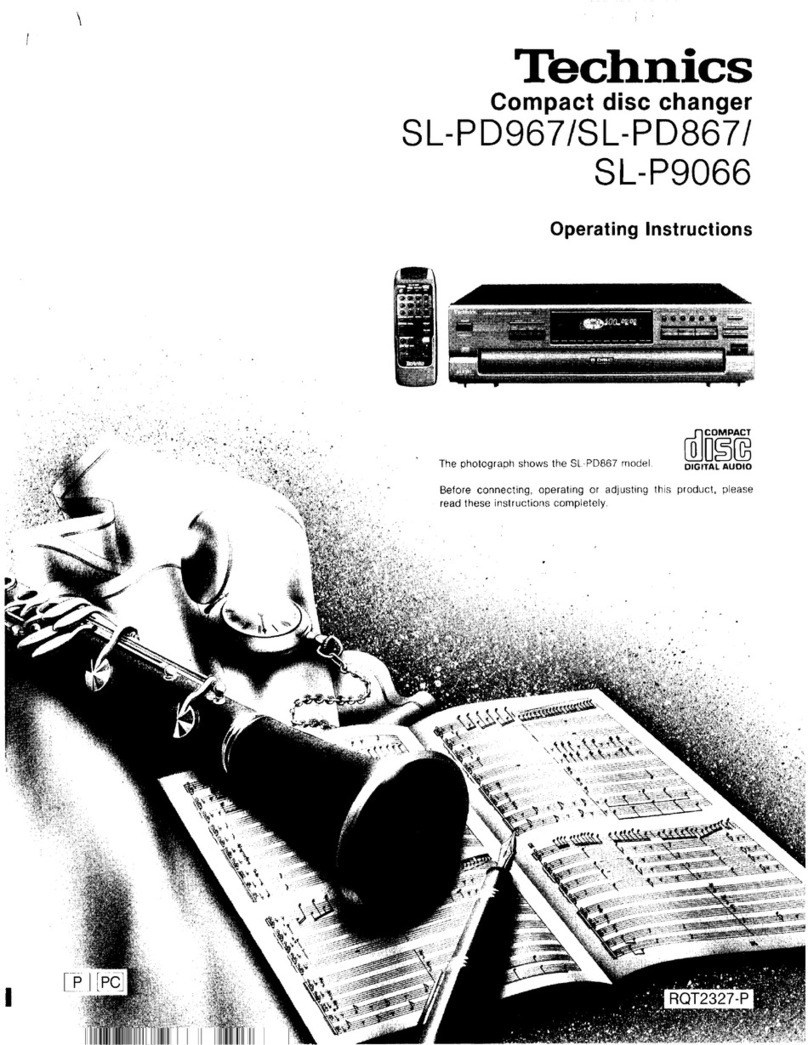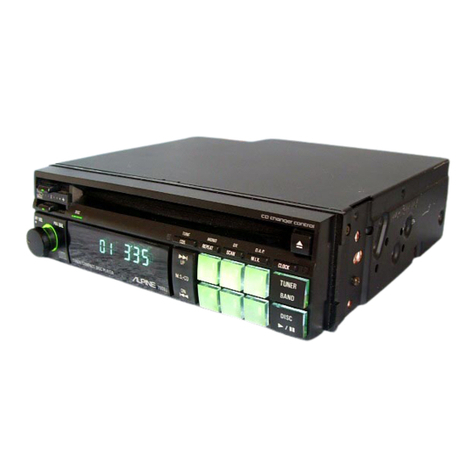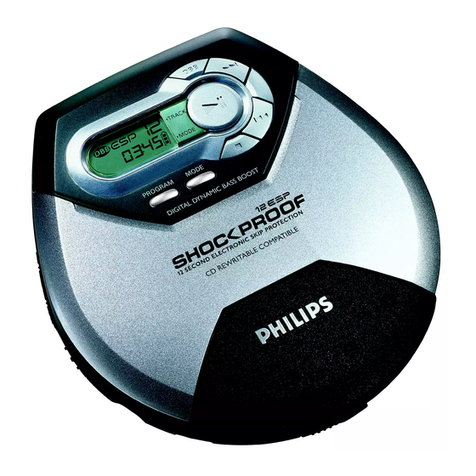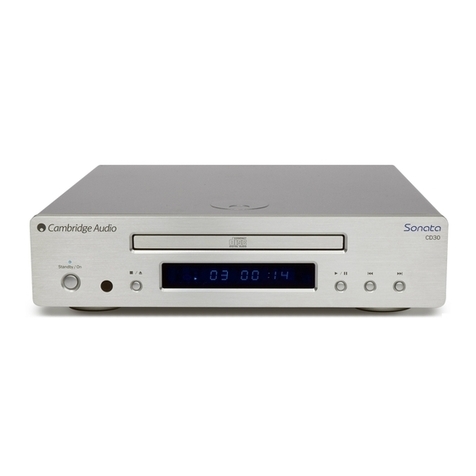
Specifications Troubleshooting Guide
CD SECTION
Audio
No of channels 2(left and right, stereo)
Frequency response 20 to 20,000 Hz
(+0dB to -8dB)
DA converter 1bit, MASH
Headphone
output level RMS max 6mW+6 mWV
16 0. (adjustable)
Pickup
Light source Semiconductor laser
Wavelength 780 nm
RADIO SECTION
Frequency
Radio frequency FM, 87 9-107 9MHz
{0 2MHz steps)
87 5-108 0MHz
(0 1MH2/0 05 MHz steps)
AM, 520-1710 kHz
(10 kHz steps)
522-1629 kHz
(9 kHz steps)
GENERAL
Power supply DC 45Vwith optional
AC adaptor RP-AC46
Dimensions
(WxHxD)
Mass
134 x31 9x140 3mm
(5fe"xi%"x5,7
As")
341 g(12 0oz)
(with battenes)
297g(10 5oz)
(without batteries)
Operational temperature
range 0"C-40 °C
{32 °F-104°F)
Rechargeable temperature
range 5"C-4Q"C
(41 °F-104°F)
Play time
[Approximate operating time in hours (in
hold mode with S-XBS canceled, at
25 °C (77 °F) on aflat, stable surface)]
Batteries
used CD RADIO
2alkaline
batteries 25 75
2optional
rechargeable
batteries
(P 3GAVA/2B)
11 30
•The play time may be less depending
on the operating conditions
•Play time will be considerably reduced
when playing CD-RW
Recharging time About 5hours
Note
Specifications are subject to change
without notice
Mass and dimensions are approximate
Before requesting service, make the below checks If you are in doubt about some of
the check points, or if the remedies indicated in the chart do not solve the problem
In the US A, contact the Panasonic Customer Call Center at 1-800-211-7262,
or e-mail consumerproductsQpanasonlc com, or web site (http //www
Panasonic com)
In Canada, contact Panasonic Canada tnc Customer Care Centre at 905-624-
5505, or web site (www panasonlc ca), or an authorized Servlcentre nearest
you
Problem Check this
Cannot close the lid Is the disc properly secured in place'
Cannot play discs •Is the unit in HOLD mode'
•Is the disc properly secured in place'
•Is the disc dirty or scratched'
•Is there condensation on the lens'
(Wait for about one hour and then try again )
Tracks on disc do not play
In order, starting with the
first track
•Is the random play mode on'
•Did you stop play in the middle of the disc last
time'
Cannot hear music—too
noisy
•Is the headphones plug inserted all the way'
•Is the plug dirty (Wipe away dirt on plug )
•Separate the unit from mobile phones
TV picture is distorted
Radio reception is noisy
Are you using the unit too near aTV or tuner?
(Keep the unit away from the TV or tuner
)
No reception
The FM frequency range Is
different
Has the frequency step been set for your area'
Cautions
Water Resistant (Splash Proof)
This unit is splash proof and is nol designed to be used under
water
Please note the following points lo avoid possible damage to the
unit and the included headphones
•Do not Immerse In water
•Do not splash water onto the unit
•Water in the headphones |ack and DC IN Jack may damage
the unit Cover them with the attached rubber caps when
they are not In use
•To prevent water from entering the unit, push the lock re-
lease into place to close the lid
•If the unit or Ihe headphones get wet with water or sweat dry
them with asoft cloth
•Do not open the disc lid near water or sand Before opening or
closing the disc lid be sure to wipe off water dust or sand on
the unit and operate with adry hand
•Make sure there is no sand or dust around the disc lid The disc
lid will not seal properly if there is, and water may get into the
unit possibly causing amalfunction
•Do not expose the unit or the headphones to salt water If the
unit and headphones are immersed in salt water wash them
with atittle fresh water then dry with sort cloth Never wash
them under running water
•Do not place the unit and the headphones lor along period of
time in high temperature and high humidity areas such as bath-
rooms or damp basements etc
•The lock release may Ireeze in low temperatures Allow the unit
to return to the operational temperature range (0 "C-40 °C,
32°F-104'F) before opening the lock release
Selection and care of rechargeable /dry
cell batteries
BSelection
As asafety precaution the portable CD players made by
Panasonic are constructed so it is impossible to recharge ordi
nary battenes
Only battenes especially designed for this unit can be recharged
Special rechargeable Nl-Cd batteries
P-3GAVA/2B (set of 2)
For details check with your deala
Listening caution
Special rechargeable
battenes
Ordinary dry cell
batteries/rechargeable
batteries
©((( ((o) e©( De
•If rechargeable battery play time is shorter after recharging the
battenes have reached the end of their service life Replace
them with the recommended replacements
•Play time may be shorter than usual after recharging battenes
for the first time or after they have been unused for along time
Repeatedly recharge and discharge the battenes it this occurs
to restore them to normal
Care
To prevent battery damage electrolyte leakage and short-circuit
mg heed the following points
•Do not peel off the covering on battenes and do not use if the
covenng has been peeled off
•Align the poles ©and ©correctly when inserting the battenes
•Do not mix different types or makes of battenes or old and new
battenes
•Remove the batteries il you do not intend to use the unit for a
long time
•Do not throw into fire short-ciicuit disassemble or subject to
excessive heat
•Do not attempt to recharge dry cell batteries
•Do not allow metal objects to touch the battery terminals as this
may cause short circuiting which is dangerous
•When carrying batteries in apocket or bag ensure no metal ob
jects such as necklaces are placed together with them Contact
with metal may cause short-circuiting which can cause afire
For safety, carry the battenes in the battery carrying case
When driving acar
In the interest of traffic safety, do not operate the unit while dn-
ving
Do not play your headphones or earphones at ahigh volume
Heanng experts advise against continuous extended play
If you experience aringing in your ears reduce volume or dis-
continue use
Do not use while operating amotonzed vehicle It may create a
traffic hazard and is illegal in many areas
You should use extreme caution or temporarily discontinue use in
potentially hazardous situations
Even if your headphones or earphones are the open air type de-
signed to let you hear outside sounds don ttum up the volume
so high that you can't hear what saround you
Sound can be deceiving Over time your hearing "comfort level"
adapts to higher volumes of sound So what sounds "normal can
actually be loud and harmful to your hearing
Guard against this by setting your equipment at asafe level BE
FORE your heanng adapts
To establish asafe level
•Start your volume control at alow setting
•Slowly increase the sound until you can hear it comlortably and
clearly and without distortion
Once you have established acomfortable sound level
•Leave it there
Discontinue use if you expenence discomfort with the head
phones or earphones Continued use may cause rashes or
other allergic reactions
Product Service
Do not attempt to remove the cover(s) or repair the unit yourself
Refer servicing to qualified personnel only
Product information
For product service product information or assistance with
product operation reler to the servicenter directory
